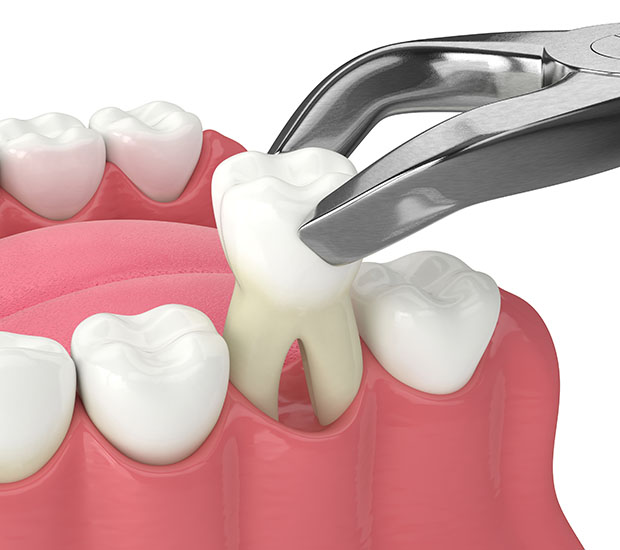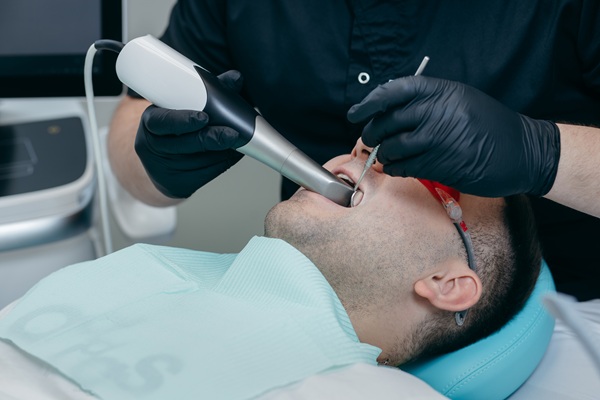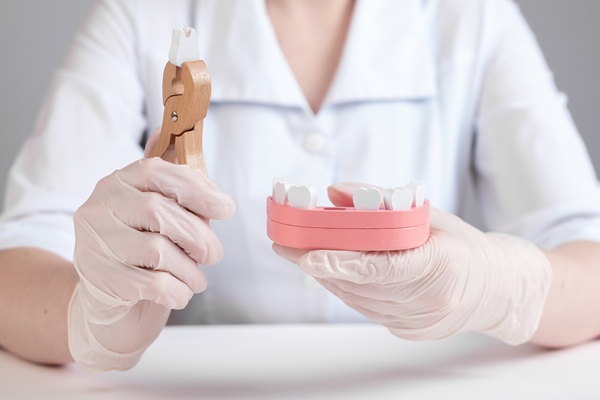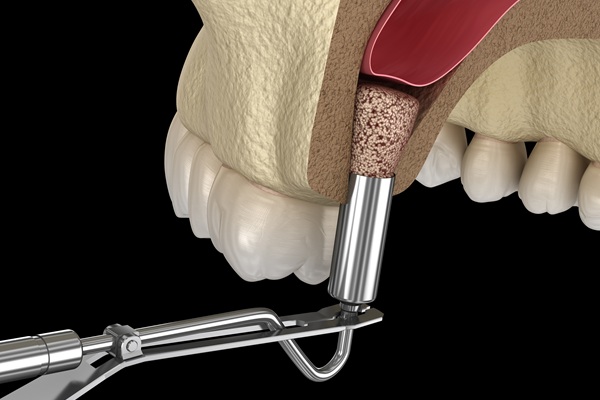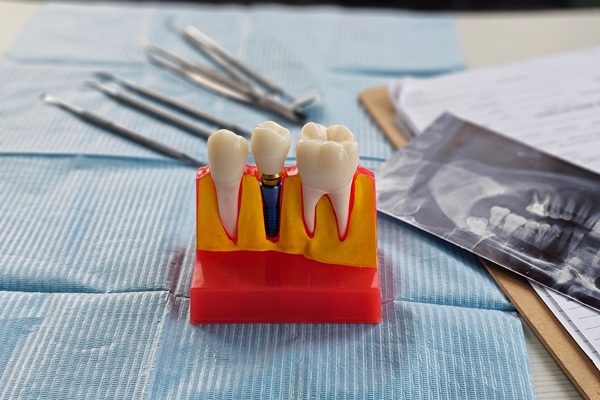Tooth ExtractionBoca Raton, FL
Tooth extractions may sound intimidating, but they are quite common and can provide many benefits in keeping the oral cavity healthy. A variety of tooth-replacement options are available, including tooth-colored crowns that keep your smile in line. With proper care and maintenance, tooth replacements can last for up to a decade. We recommend that patients read and understand the tooth extraction procedure before coming to their appointment.
At Thomas A. Copulos DDS, PA we offer tooth extractions for patients with compromised teeth. Our team will likely diagnose and recommend a tooth extraction after an initial consultation or examination. We can help you get back on track to a healthy mouth and bright smile. To learn more about a procedure or schedule an appointment, call 561-763-1066 today.
Compromised Tooth: When an Extraction is Necessary
A compromised tooth is defined as an impaired tooth that cannot function properly without restoration. The American Dental Association (ADA) suggests tooth extraction for disease, trauma, or crowding. In most cases, extractions are necessary when a tooth becomes infected, at risk for infection, severely decayed or damaged, or are causing issues with surrounding teeth.
Often, tooth decay causes severe infection, and extraction is the only option to stop it from spreading. In some cases, severely cracked and broken teeth are unsalvageable, and we may recommend extracting them. Overcrowded teeth can also necessitate tooth extraction. Removing these teeth allows the surrounding teeth to move into the proper position.
Signs and Symptoms of a Compromised Tooth
Many patients are unaware that their tooth requires extraction until a dentist tells them. However, in most cases, certain signs and symptoms present themselves well before the need for extraction. It is important to recognize these signs to help avoid more complications from arising.
Common signs and symptoms in a tooth requiring extraction:
- A loose tooth
- An impacted baby tooth
- Difficulty or pain when chewing
- Jaw pain, soreness, or stiffness
- Spacing or overcrowding issue
- Swollen gums or jaw
- The tooth or gum tissue surrounding a tooth is infected or inflamed
Patients who are experiencing any of these symptoms should contact Dr. Thomas Copulos immediately to schedule an examination and extraction, if necessary. We can discuss the best course of action and recommend alternative treatments for those who are unable to undergo an extraction.
Preparing for a Tooth Extraction
Before the extraction procedure, we will conduct an initial consultation in which we examine the patient’s mouth, looking closely at the compromised tooth. Our team will take a full set of X-rays to determine the level of infection and ensure the surrounding teeth are secure. We will also ask the patient questions about their symptoms, any concerns they have, and when their symptoms first started.
Preparation for an extraction depends on the type of procedure: simple or surgical. A simple extraction is intended for easily visible and accessible teeth. It involves a local anesthetic which will only numb the extraction area. A surgical extraction is typically performed when a tooth lies below the gumline and requires a small incision to reach. In most surgical extractions, an IV or general anesthesia can help keep the patient calm and relaxed throughout the procedure.
The Extraction Procedure
We begin the extraction procedure by administering the anesthetic, whether local or general anesthesia. Once the patient is numb, we will begin the procedure. Teeth are suspended to the gums by periodontal ligaments. The first step is to loosen and release the tooth from the periodontal ligament fibers.
In a simple extraction procedure, we use an instrument called an elevator that gently pulls the tooth from its socket. In a surgical extraction procedure, we will need to make small incisions around the socket to expose the tooth. In some cases, the tooth may be completely removed using the elevator. However, we may need to remove small bits of the tooth at a time. Once the entire tooth is removed, we will place a gauze pad on the site to stop the bleeding. We may also place some sutures over the extraction site to assist in closing the gum edges.
Recovery and Follow-Up Care
Patients undergoing a simple extraction will likely be able to drive themselves home. However, for those undergoing a surgical extraction, we highly recommend another person drive the patient home as the general anesthesia may not have completely worn off. We will provide the patient with aftercare instructions that will direct them on how to care for and clean the site, what to eat, and when they would require a follow-up appointment.
One of the most common risks of extraction is dry socket, which occurs when a blood clot does not form or is dislodged, exposing the bone underneath. Dry sockets can delay healing, progress infection, and aid in the development of chronic bone infection or osteomyelitis. We urge patients to contact our office immediately if they notice any symptoms or experience pain for more than three days. Dr. Copulos will likely schedule a follow-up to ensure the gums are healing as intended and to check the progress of the infection.
Frequently Asked Questions About Tooth Extractions
Will my child be in pain after their tooth extraction?
Recovery and aftercare for tooth extractions vary on a case-by-case basis. The type of tooth removed may affect the healing process because certain teeth have deeper roots than others. In general, pain should steadily decrease about three days following the procedure.
How is dry socket treated?
Dry socket can occur without proper aftercare and maintenance. The patient will have to return to our office to receive care if the blood clot dislodges prematurely. We will clean the socket and place medicine inside to help it heal.
Are wisdom teeth always extracted?
Wisdom teeth only need to be extracted when they are impacted, causing pain or pressure, or are pushing inwards to the neighboring teeth. In most cases, these signs are evident when the wisdom teeth first erupt, but they may become apparent later in adulthood as well. We will discuss whether a patient should remove their wisdom teeth when it becomes necessary.
How long will it take for the area of the tooth extraction to heal?
Every patient is different; recovery and healing largely depend on the patient’s current oral health status, gum health, oral hygiene habits, and adherence to after-care instructions. Typically, the extraction site will take about two weeks to close up. However, bone and soft tissue may take three to six months to regrow.
What are the benefits of tooth extraction?
Extraction can protect surrounding teeth from an infected tooth. Another benefit is relief from discomfort caused by an infected or severely damaged tooth. Patients can also gain a more beautiful smile as extra space can allow other teeth to move into alignment.
Schedule a Visit Today
Tooth extraction consultations and treatments are available at our office. The Thomas A. Copulos DDS, PA team looks forward to treating you and helping relieve pain and other associated symptoms. Call our office at (561) 763-1066 to learn more or schedule an appointment.
Thomas A. Copulos DDS, PA is located at
1000 NW 9th Ct Ste 106
Boca Raton,
FL
33486
